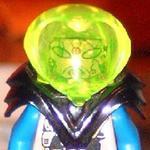[C&C1/RA1/TS/RA2] Editing paletted graphics in Gimp
-
Similar Content
-
- 0 answers
- 6298 views
-
- 1 answer
- 2994 views
-
- 0 replies
- 2169 views
-
- 1 reply
- 7489 views
-
Yuri's Revenge gameplay lag after GPU upgrade to AMD 9700xt
- Yuris Revenge
- C&C Remastered
- (and 1 more)
- 1 answer
- 3722 views
-
-
Recently Browsing 0 members
- No registered users viewing this page.




Recommended Posts
Create an account or sign in to comment
You need to be a member in order to leave a comment
Create an account
Sign up for a new account in our community. It's easy!
Register a new accountSign in
Already have an account? Sign in here.
Sign In Now